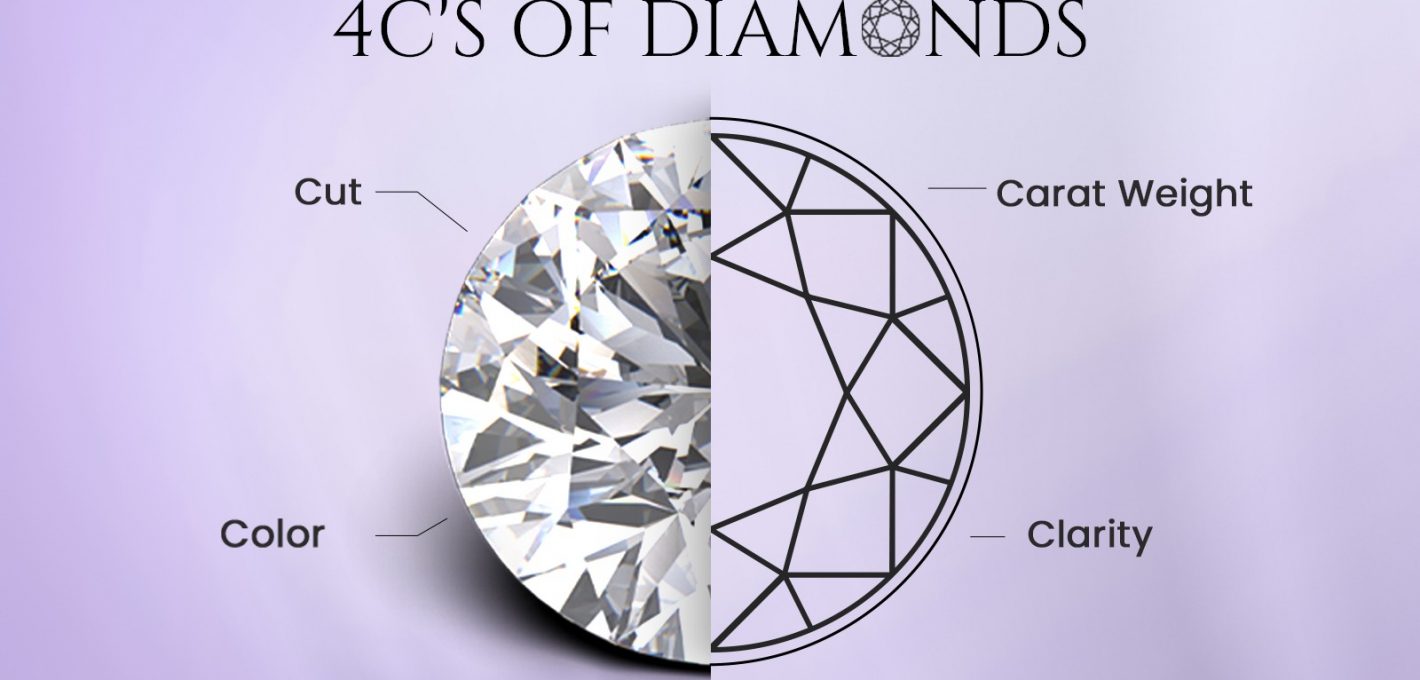The Ultimate Guide to Lab Grown Diamonds 4Cs
Uncategorized January 29, 2025, Comments Off
Lab grown diamonds have gained immense popularity in recent years, offering a sustainable and ethical alternative to natural diamonds. Understanding the lab grown diamonds 4Cs is crucial when making a purchase, as these factors determine their quality, value, and overall appearance. The lab grown diamonds 4Cs consist of cut, color, clarity, and carat weight, each playing a vital role in assessing a diamond’s beauty.
Understanding the Cut of Lab Grown Diamonds
The cut is one of the most important aspects of the lab grown diamonds 4Cs, as it directly impacts the diamond’s brilliance and sparkle. A well-cut lab grown diamond reflects light beautifully, creating a dazzling effect. The cut quality of lab grown diamonds depends on precise craftsmanship and symmetry. Choosing an ideal cut ensures that lab grown diamonds exhibit maximum fire and scintillation, making them indistinguishable from mined diamonds.
The Role of Color in Lab Grown Diamonds
Color is another crucial component of the lab grown diamonds 4Cs. Lab grown diamonds are graded on a color scale from D (colorless) to Z (light yellow or brown). The most desirable lab grown diamonds are those with minimal color, as they appear brighter and more valuable. Advanced technology in diamond creation ensures that lab grown diamonds can achieve high color grades, making them an excellent choice for those seeking a near-perfect gemstone.
Clarity and Its Importance in Lab Grown Diamonds
Clarity refers to the presence of internal and external imperfections, known as inclusions and blemishes, respectively. As part of the lab grown diamonds 4Cs, clarity plays a significant role in determining a diamond’s overall appearance and value. Lab grown diamonds typically have fewer inclusions than natural diamonds due to the controlled environment in which they are created. The clarity of lab grown diamonds ranges from Flawless (FL) to Included (I), with higher clarity grades offering a more pristine gemstone.
Carat Weight: Measuring the Size of Lab Grown Diamonds
Carat weight is the final component of the lab grown diamonds 4Cs and represents the size of the diamond. Larger lab grown diamonds are rarer and more expensive, making carat weight an essential consideration for buyers. Since lab grown diamonds are more affordable than natural diamonds, consumers can purchase larger stones without compromising quality. The availability of various carat weights allows individuals to select lab grown diamonds that suit their preferences and budget.
Why Choose Lab Grown Diamonds?
Lab grown diamonds offer numerous benefits over their natural counterparts. Apart from their ethical and sustainable production, lab grown diamonds provide exceptional value and quality. The lab grown diamonds 4Cs ensure that each diamond meets rigorous standards, giving buyers confidence in their purchase. Moreover, lab grown diamonds are virtually identical to natural diamonds in terms of chemical composition and physical properties, making them an attractive option for jewelry lovers.
How to Buy the Best Lab Grown Diamonds
When purchasing lab grown diamonds, it is essential to consider the lab grown diamonds 4Cs to ensure the best quality. Look for diamonds with excellent cut grades, high color ratings, and minimal inclusions. Understanding the lab grown diamonds 4Cs helps buyers make informed decisions and find diamonds that align with their style and budget. Additionally, choosing reputable retailers guarantees that the lab grown diamonds are certified and accurately graded.
Lab Grown Diamonds vs. Natural Diamonds
A common question among buyers is how lab grown diamonds compare to natural diamonds. The lab grown diamonds 4Cs provide the same criteria for evaluation as natural diamonds, ensuring consistency in quality assessment. The primary difference lies in their origin—lab grown diamonds are created using advanced technology, while natural diamonds form over millions of years beneath the Earth’s surface. Despite this distinction, lab grown diamonds offer the same brilliance, durability, and aesthetic appeal as mined diamonds.
Caring for Lab Grown Diamonds
Proper care and maintenance are essential to preserve the beauty of lab grown diamonds. Regular cleaning ensures that lab grown diamonds maintain their sparkle and brilliance. Using mild soap, warm water, and a soft brush helps remove dirt and oils that accumulate on the diamond’s surface. Storing lab grown diamonds separately from other jewelry prevents scratches, keeping them in pristine condition. By following these care tips, lab grown diamonds remain stunning for years to come.
The Future of Lab Grown Diamonds
As technology continues to advance, the popularity of lab grown diamonds is expected to rise. The lab grown diamonds 4Cs play a crucial role in determining their quality, ensuring that consumers receive high-quality gemstones. With increasing demand for ethical and sustainable jewelry, lab grown diamonds are becoming the preferred choice for modern buyers. The affordability, beauty, and environmental benefits of lab grown diamonds make them a smart investment for the future.
Final Thoughts on Lab Grown Diamonds 4Cs
Understanding the lab grown diamonds 4Cs—cut, color, clarity, and carat weight—helps buyers make informed decisions when purchasing diamonds. These factors influence the appearance, value, and overall quality of lab grown diamonds. Whether for engagement rings, earrings, or other jewelry pieces, lab grown diamonds offer a brilliant and responsible alternative to mined diamonds. By considering the lab grown diamonds 4Cs, consumers can select stunning gemstones that align with their preferences and ethical values.